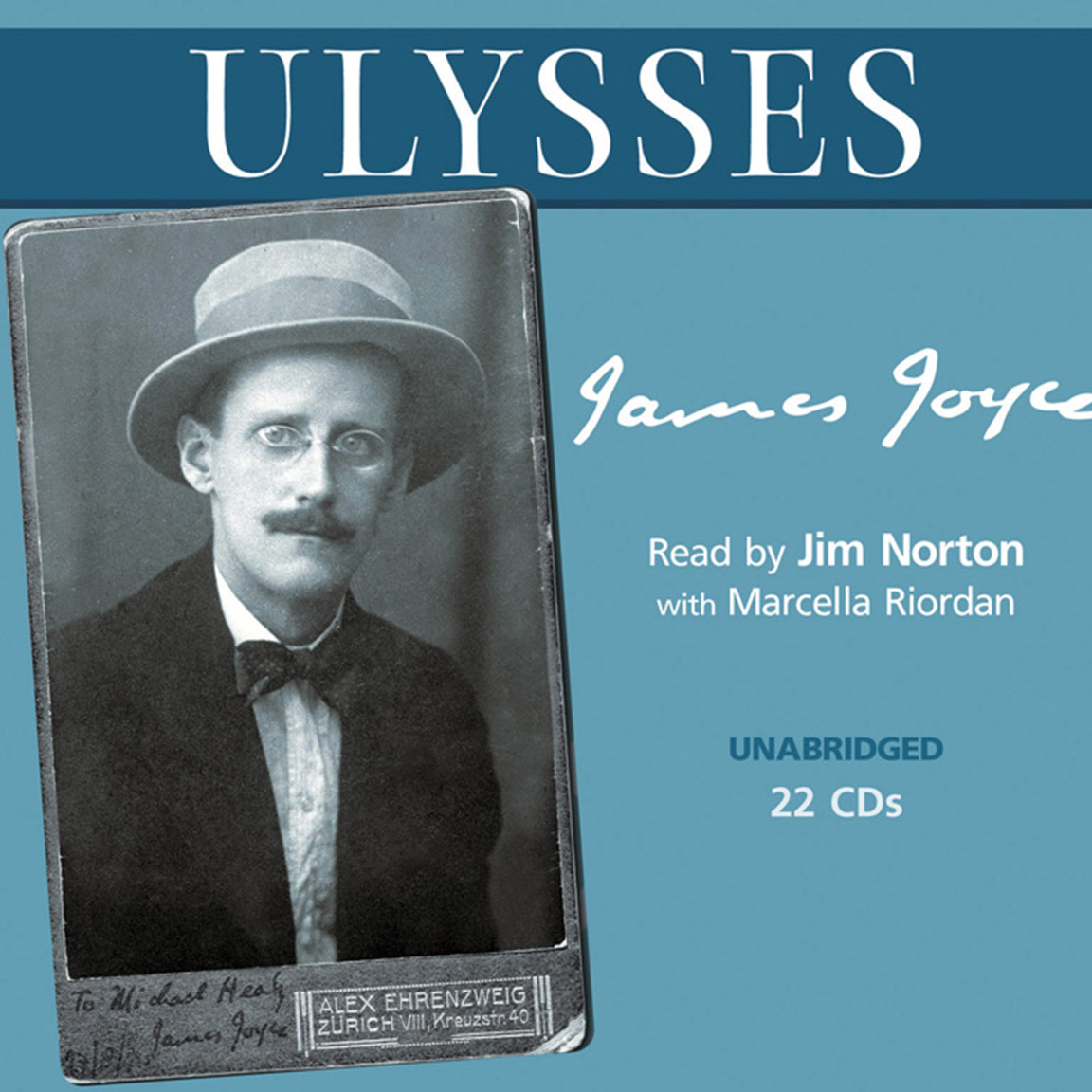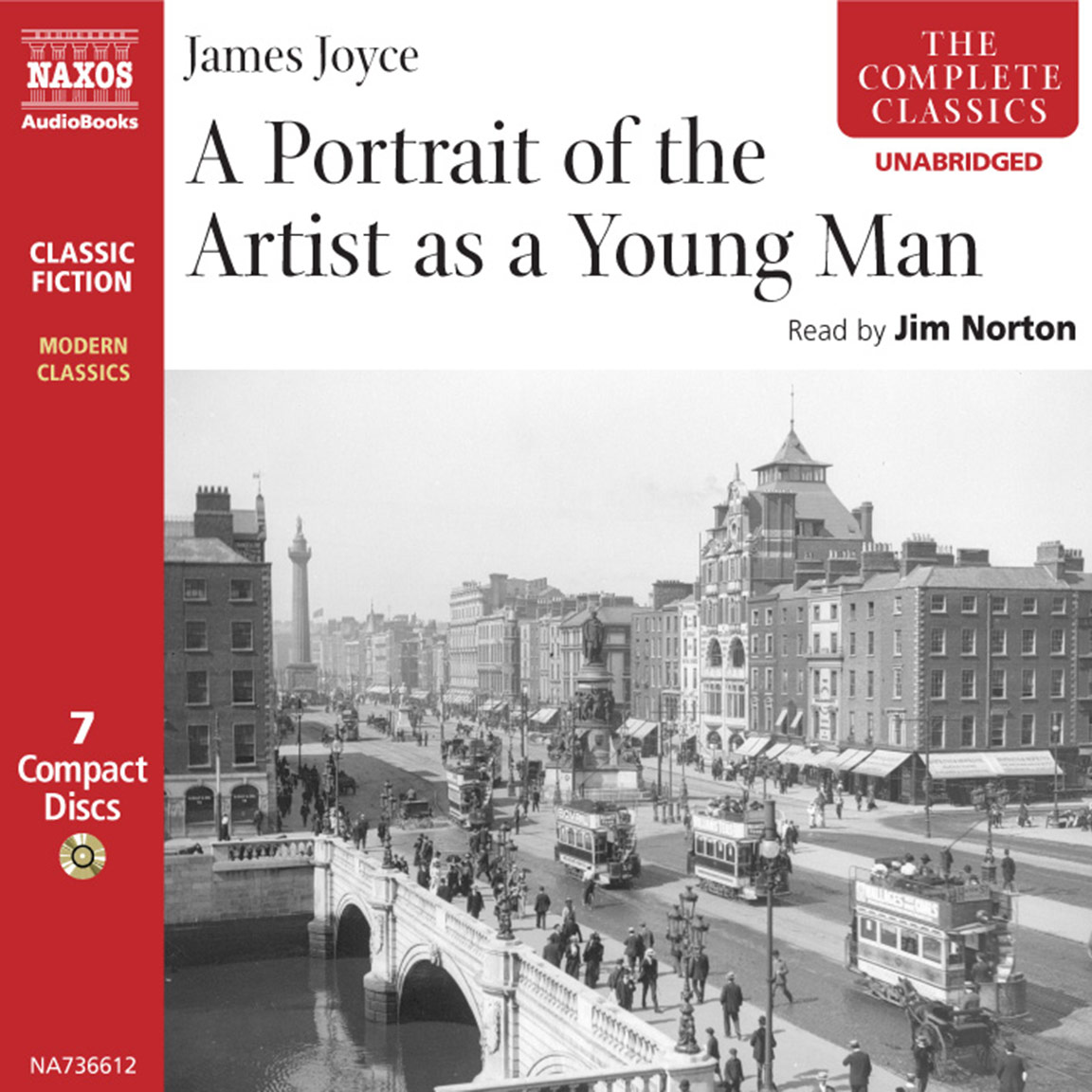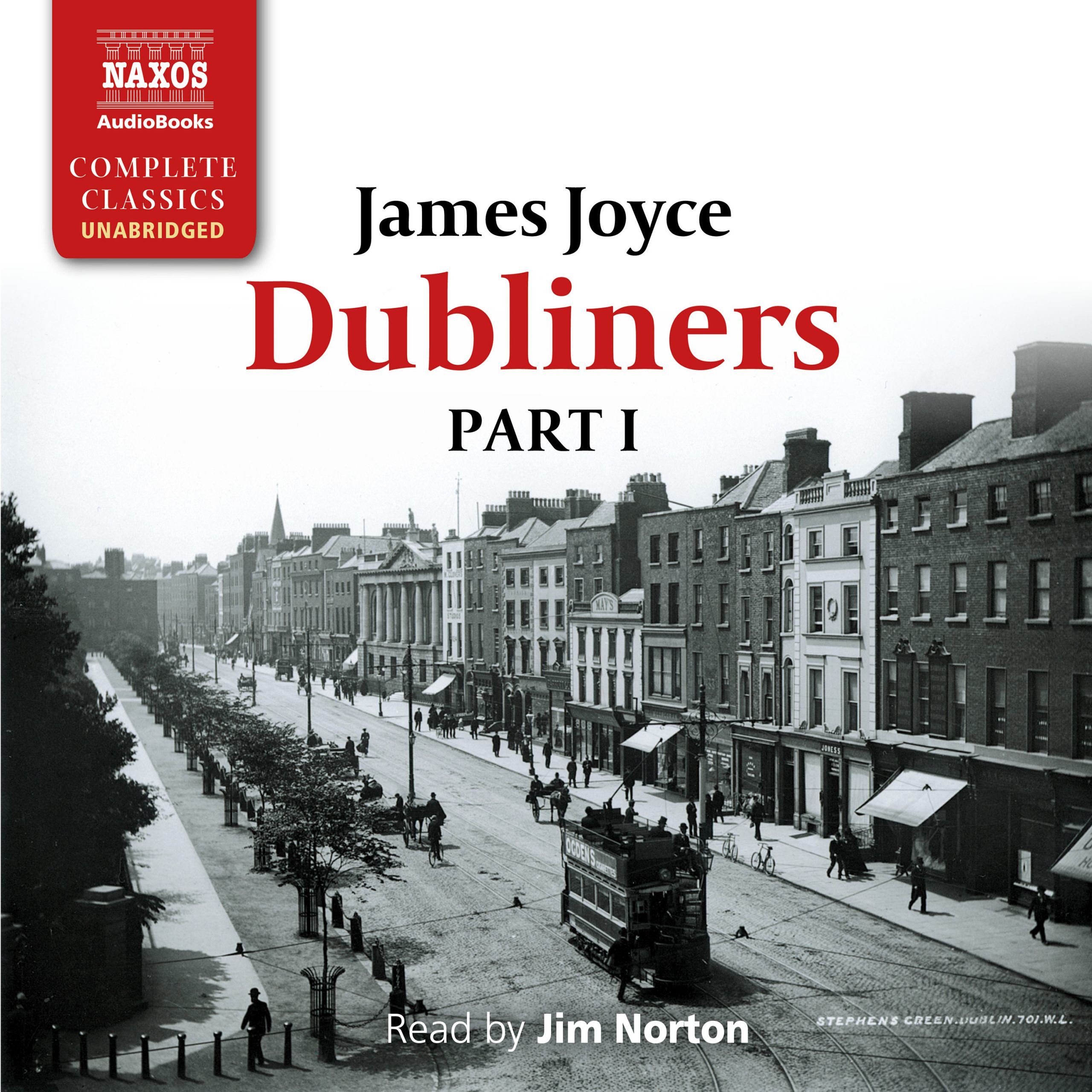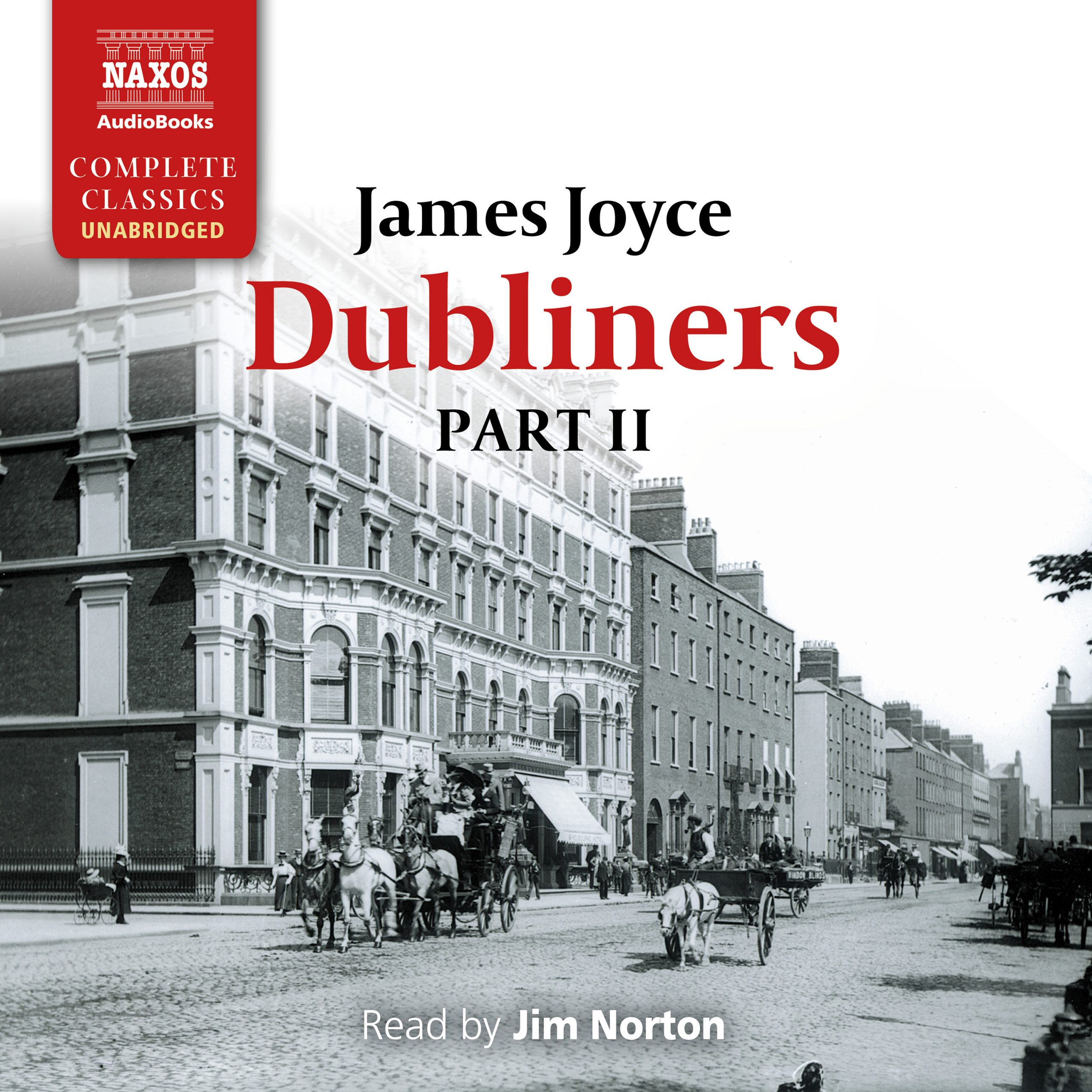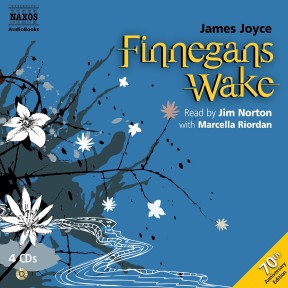
Audio Sample
James Joyce
Finnegans Wake
Read by Jim Norton with Marcella Riordan
abridged
Finnegans Wake, the greatest avant-garde novel of all time, was first published seventy years ago – and people are still trying to work out what it is about. There is Humphrey Chimpden Earwicker – aka HCE (Here Comes Everyone) – and Anna Livia Plurabelle, but also Finnegan the hod carrier (or was he a giant?), whose wake is the subject of the book. This masterly reading of the abridged version, with copious notes aiding comprehension, is republished with a new cover.
-
4 CDs
Running Time: 5 h 10 m
More product details
ISBN: 978-962-634-960-1 Digital ISBN: 978-962-954-851-3 Cat. no.: NA596012 Download size: 76 MB BISAC: FIC004000 Released: May 2009 -
Listen to this title at Audible.com↗Listen to this title at the Naxos Spoken Word Library↗
Due to copyright, this title is not currently available in your region.
You May Also Enjoy
Reviews
Joyceans worldwide will celebrate Bloomsday on Tuesday with readings from Ulysses in honour of Leopold Bloom’s day-long odyssey through the streets of Dublin to the arms of his wife, Molly. This year, there will be a rival attraction: the launch of a Naxos recording of Finnegans Wake, the novel Joyce worked on for 17 years after Ulysses. It’s estimated that a complete recording of this eccentric masterpiece would run to about 20 CDs, but Naxos has made an attractive abridgement in four, recorded with wit and clarity by Jim Norton and Marcella Riordan. I’ve never met anyone who has actually managed to read every page of this extraordinary book, from its famous opening: “riverrun, past Eve and Adam’s, from swerve of shore to bend of bay …” and there can be little doubt that Joyce intended his work to be listened to as much as read. This brilliant recording is the perfect short cut for slackers, poseurs and insomniacs.
Robert McCrum, The Observer
Essays were the chatty columns of their times, personal, opinionated, intended to amuse as well as to instruct. Neville Jason’s selection of Favourite Essays: An Anthology is full of contrasts, with subjects as disparate as Thackeray on ogres, Hazlitt on the joys of tramping cross-country alone and Ruskin campaigning against a Lakeland railway. It begins with Michel de Montaigne (the inventor of the form) and Francis Bacon (for me the finest of all essayists), and ends with Charles Dickens on May Day and G.K. Chesterton on lying in bed. Some are well known – Swift’s satirical A Modest Proposal, Charles Lamb’s haunting Dream Children – others, such as Richard Steele’s jaunt through London in the early eighteenth century, wonderful discoveries.
Christina Hardyment, The Times
Time magazine includes Finnegans Wake among its 100 Greatest Books of the 20th century. Stanislaus, Joyce’s brother, called it “the witless wandering of literature before its final extinction”, but that might just be sibling rivalry. Whatever your take (assuming, of course, that you’ve read it – most people haven’t) on the novel that took Joyce 17 years to write, some of it in Bognor, no one would deny that it is an incredibly difficult, if not totally impossible, book to read. Here’s a taste: “in their bed of trial, on the bolster of hardship, by the glimmer of memory, under coverlets of cowardice, Albatrus Nyanzer with Victa Nyanza, his mace of might mortified, her beautifell hung up on a nail, he, Mr of our fathers, she, our moddereen ru arue rue, they, ay, by the hodypoker and blazier, they are, as sure as dinny drops into the dyke . . . A cry off. Where are we at all? And whenabouts in the name of space? I don’t understand.”
And chances are you don’t either, but don’t fret. Just listen as you would to Rachmaninov or reggae or rap, whatever turns you on, for if ever a book cried out to be listened to, this is it and Jim Norton and Marcella Riordan have such wonderful voices. A while ago they did Joyce’s Ulysses unabridged, which is also considered hard-going, but is Polyanna compared to this. There’s not a lot of point in telling you what it’s all about even if I could. It hinges vaguely on the Earwicker family, Humphrey Chimpden, his wife Anna Livia Plurabelle and their three children Shem, Shaun and Isobel, but it’s also a history of Ireland, Irish mythology, Greek mythology, French folk tales, opera, philosophy – anything you like, it’s there. It’s exuberant, outrageous, funny, extraordinary, full of blarney and charm and heart-rending music – just like Ireland. I loved it.
Sue Arnold, The Guardian
Booklet Notes
Even before James Joyce published Finnegans Wake in 1939 it would have been anticipated as a novel of great importance. After all, the author of Dubliners, A Portrait of the Artist as a Young Man and Ulysses Ahad been working on it for 17 years. What’s more, Joyce, with his talent for generating both publicity and an atmosphere of mystery, had already published short sections of the Work in Progress as separate stories, apparently with the idea of giving his public a ‘taster’ of what was to come – and also providing some much needed income along the way.
These ‘tasters’ may, as Anthony Burgess suggests, have led his public to expect a work of almost childlike charm. ‘The Ondt and the Gracehopper’ is a parody of a fable by La Fontaine (The Ant and the Grasshopper) written in difficult but amusing language reminiscent of Lewis Carroll’s Jabberwocky. ‘The Mookse and the Gripes’ – one of the most difficult passages in the novel – is also deceptive because of its fairy-tale style. It begins: ‘Eins within a space and a weary wide space it wast, ere whoned a Mookse…’, and it ends: ‘But the river tripped on her by and by, lapping as though her heart was brook: Why, why, why! Weh, oh weh! I’se so silly to be flowing but I no canna stay!’ Such charm may allay the unease of the reader who on first reading (but possibly also on second and third) might find it hard to decipher the precise meaning of these fables.
Another section published separately – in which two washerwomen gossip about the exploits of Anna Livia Plurabelle – (‘O tell me all about Anna Livia! I want to hear all about Anna Livia! Well, you know Anna Livia…’) – is imbued with such musicality and so many delicious watery puns, including references to hundreds of the world’s rivers, that a reader may be less concerned to know the precise background to the gossip. For the language takes us with it, and as the washerwomen turn into tree and stone on the river bank and night falls, the poetic conclusion is satisfying in itself: ‘Tell me, tell me, tell me, elm! Night night! Telmetale of stem or stone. Beside the rivering waters of, hitherandthithering waters of. Night!’
As Samuel Beckett wrote, in his essay Dante… Bruno. Vico… Joyce: ‘His writing is not about something; it is that something itself… When the sense is sleep, the words go to sleep… When the sense is dancing, the words dance.’
‘Certainly, an end
is implied in the
notion of a wake –
but a beginning,
too, for after
sleep, we wake.’
And yet the novel certainly is ‘about something’, and on its publication there must have been rather widespread dismay when enthusiastic fans of Ulysses discovered how difficult Joyce had made it for them to discover what that ‘something’ might be. Now, at least there was a title – Finnegans Wake – and from this title alone a number of deductions could be made. One could assume that these words had more than one connotation. In this case all the analyses lead in a similar direction. Finnegan, a common enough Irish name, contains within it the suggestion of an end and a beginning (Fin/again). It might also recall the popular children’s round concerning Michael Finnegan: ‘…he grew whiskers on his chin again; the wind came up and blew them in again; poor old Michael Finnegan, begin again…’
Certainly, an end is implied in the notion of a wake – where the lamentation (or merrymaking) beside the corpse is intended to escort the soul to its afterlife; but a beginning, too, for after sleep, we wake. And some readers may be familiar with an old popular Irish American ballad called Finnegan’s Wake, which had been a favourite of Joyce’s brother Stanislaus when, as youngsters, they joined in the family musical evenings.
The fall and resurrection of Finnegan the hod-carrier is a kind of modern myth with obvious resonances in Joyce’s novel. Clear references to the song, and paraphrases from it, are to be encountered throughout the book: ‘Wan warning Phill filt tippling full, his howd feeled heavy, his hoddit did shake…’ But at the same time, the mythical hero of this novel is another ‘Finn’ – the legendary Irish giant Finn MacCumhal. According to Richard Ellman, Joyce later informed a friend: ‘He conceived of his book as the dream of old Finn, lying in death beside the river Liffey and watching the history of Ireland and the world – past and future – flow through his mind like flotsam on the river of life.’
Nothing less than the history of Ireland and the world, then, is the subject of Joyce’s novel. But there is yet another incarnation of hero Finn – a rather more immediate fictitious protagonist – one Humphrey Chimpden Earwicker, publican, a lumbering fellow with a stutter, a hump on his back and a rather disreputable past, for he may have been involved in some sexual impropriety in Dublin’s Phoenix Park. His pub, the Mullingar, beside the Liffey at Chapelizod, is also home to his wife Anna Livia Plurabelle, their two sons (Shem and Shaun) and their daughter Isobel (or Isolde).
In the novel’s flotsam and jetsam dreamworld, however, Earwicker, Anna and the rest come and go in a shifting landscape which sometimes defies logic. Their presence is often signalled by the appearance of their initials, HCE and ALP. So we encounter Earwicker, for example, as ‘Howth Castle and Environs’, or ‘A hand from the cloud emerges’; and Anna Livia appears as ‘Amnis Limnia Permanent’ or ‘And the larpnotes prittle’. And it is no coincidence that their pub is in the Dublin suburb of Chapelizod, an anagram of HCE, ALP and Izod (Isolde). The sons, Shem and Shaun, are twins and yet opposites. Shem, like Joyce himself, is a ‘penman’, an artist and man of ideas. His brother Shaun is more practical and less imaginative – a postman, antagonistic towards his more famous brother, who he considers a charlatan and degenerate.
On one level these brothers are indeed James and his brother Stanislaus, who was of the opinion that Finnegans Wake represented ‘the witless wandering of literature before its final extinction’. On another level, though, they represent all archetypal opposites – active and passive, positive and negative, Yin and Yang, East and West – as well as, for Joyce, the doctrine of the 16th-century philosopher Giordano Bruno of Nola, which sees unity in the reconciliation of opposites. Bruno the Nolan is encountered several times in Finnegans Wake, sometimes playfully confused with the Dublin booksellers Browne and Nolan.
A more important philosophical background to Joyce’s dream history, however, is the Neapolitan Giambattista Vico, who divided human history into recurring cycles – theocratic, aristocratic and democratic ages followed by a ‘ricorso’, or return. These four recurring divisions of time allow us to see history as circular, like the seasons of the year or the human life cycle – birth, marriage, death, burial and resurrection. Thus, Joyce structures his entire book in this way – three large chapters and a shorter fourth one (Ricorso), while individual sentences often refer to the Viconian cycle: ‘The lightning look, the birding cry, awe from the grave, everflowing on the times’/ ‘A good clap, a fore wedding, a bad wake, tell hell’s well’. According to Vico, each cycle is initiated by a thunderclap (a big bang?), and Joyce borrows this idea, transforming the thunderclap into a series of 100-letter words.
Central to the entire edifice of Finnegans Wake is Dublin itself – along with the Liffey and Howth Head – just as in Ulysses. Seen from across the bay of Dublin, Howth Head looks like a person asleep or laid out for a wake. Some refer to it as the sleeping princess, but for Joyce it is the sleeping (or dying) Finn MacCumhal. The River Liffey, Anna Livia, is like the cycle of life itself. From its source in the Wicklow Hills, the Liffey trickles and grows for 80 miles before flowing past HCE’s pub and the Phoenix Park, with its monument to Wellington the Iron Duke, bringing life to the city of Dublin (Baile-atha-Cleath) and water to the Guinness Brewery (‘Guinness is good for you’, as Joyce regularly reminds us). From the city she passes out into the sea where she can be absorbed before being taken up into the atmosphere to fall again as rain on the Wicklow Hills.
Famously, Finnegans Wake begins and ends in mid sentence: ‘A way a lone a last a loved a long the’ – leading us back to ‘riverrun, past Eve and Adam’s…’
Notes by Roger Marsh
A complete recording of Finnegans Wake would require 16–20 compact discs. What we offer here amounts to about a quarter of the book (in terms of quantity) but does, I hope, convey a sense of the complete narrative by retaining as much as possible of what is essential and indispensable, but omitting particularly troublesome passages and five whole chapters – one from Book 1, and two each from Books 2 and 3. While there is always a sense of guilt at tampering to this extent with an author’s intentions, I have been consoled by two factors. First, Joyce himself allowed part publication of the novel prior to its final appearance in full, in the form of the Tales of Shem and Shaun and Anna Livia Plurabelle, as well as the extracts which appeared in Eugene Jolas’s periodical Transition.
Second, and more convincingly perhaps, this recording is aimed primarily at those readers who have never been able to make much headway with Finnegans Wake (which is most readers) and for whom even Burgess’s Shorter Finnegans Wake may seem a hard task. Five hours, I would suggest, would seem enough as a first introduction. At the same time, however, I am sure that hearing this material read with understanding will be something of a revelation, even to those who already have some familiarity with the book. For them, and for new readers, the accompanying script of the abridgement will enable a comparison of the spoken word with the written word.
Roger Marsh
